Elephant & Castle has history dating back to 1765, and has evolved greatly ever since. But is there such a thing as too much growth?
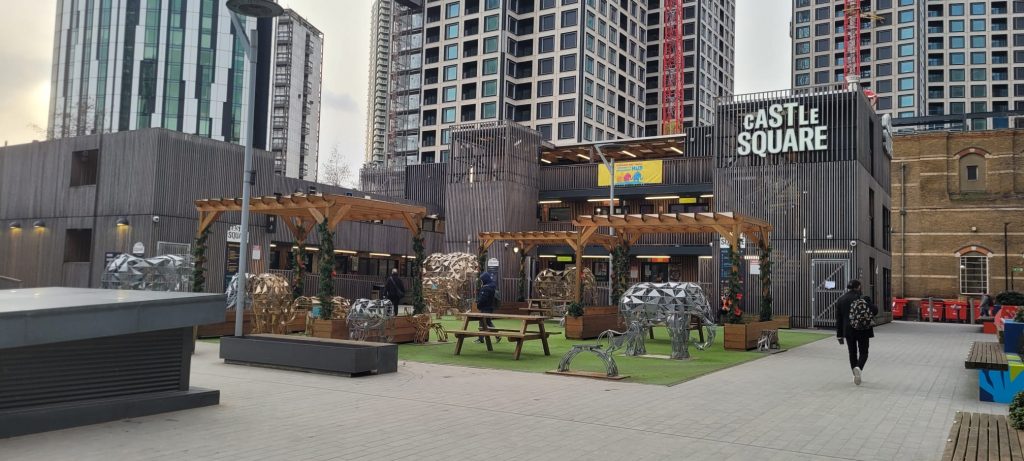
Castle Square is a collection of small independent businesses at one of the entrances to the new Elephant Park, many of which were a part of the Elephant & Castle shopping centre before it was demolished in 2021. The E&C website states that the Square is “temporary and affordable” whilst the new town square is developed. A great part of these businesses are (and were, in the case of the shopping centre) Latin American. Jennette Arnold, a former Chair of the London Assembly, was quoted as saying in 2009 (when redevelopments were first being planned) that E&C “cannot be developed without the Latin American community’s full participation”.
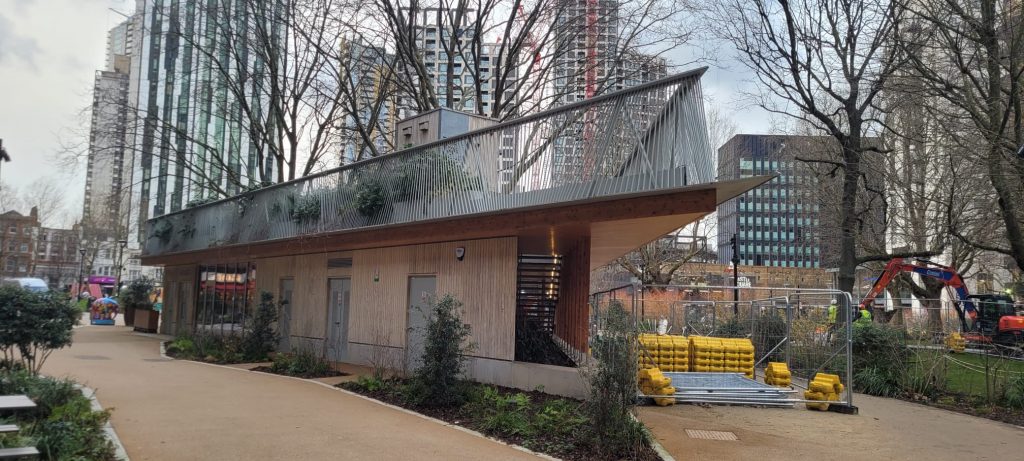
The centre piece of the new Elephant Park is The Tree House (currently under construction), designed by Bell Phillips Architects. Invoking the child-like sentiment of a treehouse one might build in their backyard with the stripped wood framing the central tree, The Tree House is described as a ‘community space’ on the E&C website. Though there is an argument to be made about what exact kind of community is being welcomed here- and what community has been pushed out.
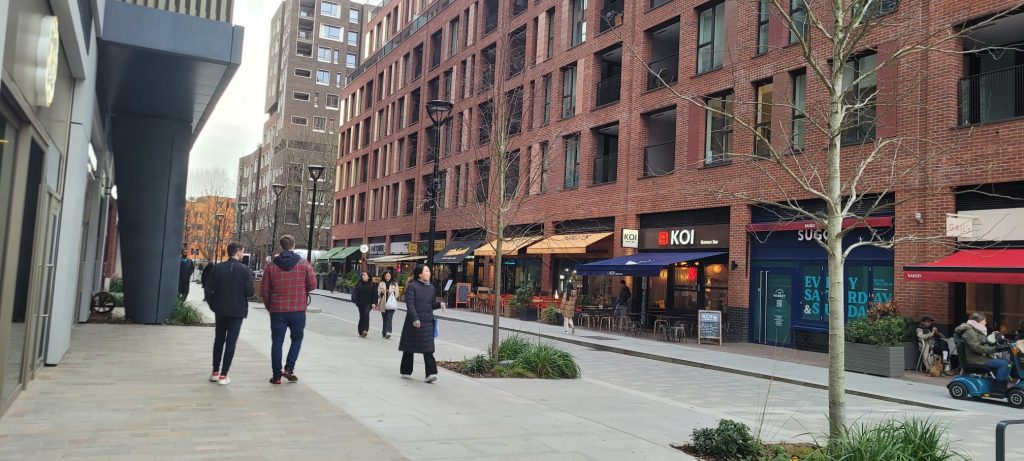
Sayer Street, while offering new employment feels like a dark and sterilized echo of what many remember the E&C shopping centre looked like. Santiago Peluffo, an activist working for ‘Latin Elephant’ a charity set up to support ethnic minority traders at risk of displacement, has been quoted as saying “the clustering of businesses at these sites is crucial to the dynamics of the community, if you disperse it, it loses its strength, its vibe, its heart and spirit.” in reference to Latin communities and hubs being forced out. A majority of these new businesses are branches of thriving franchises, whereas the independent businesses are cobbled together into a “temporary” location.
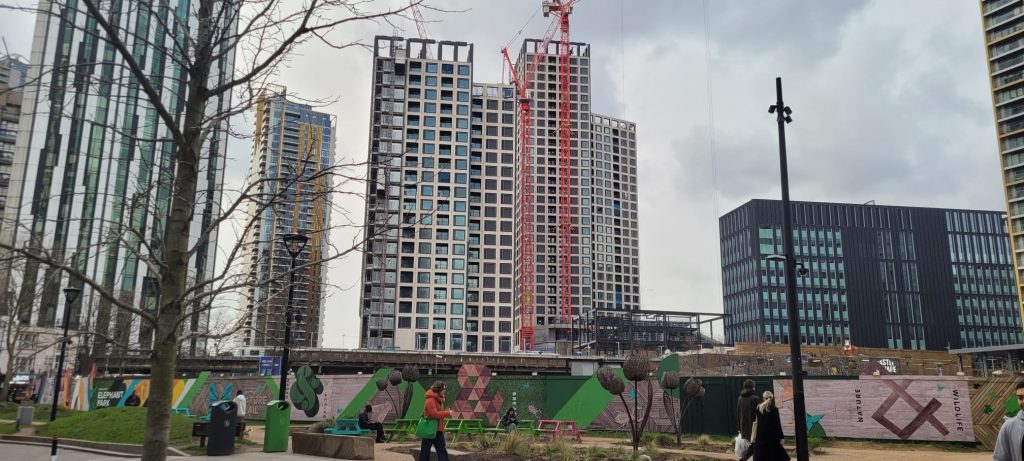
Many new housing units have been and are in the process of being built. Sadiq Khan has claimed that many of these new homes will be “genuinely affordable”, but only 116 are planned to be social rent homes which fall short of “Southwark Council’s thresholds and wider targets set by the mayor”, according to campaigners quoted by Inside Housing. “According to a 2019 report Southwark has 12,000 families waiting for new council homes. Southwark council has promised to build 11,000 new council homes—but only over a thirty-year period”, states Jerry Flynn, a social-justice campaigner from South London.
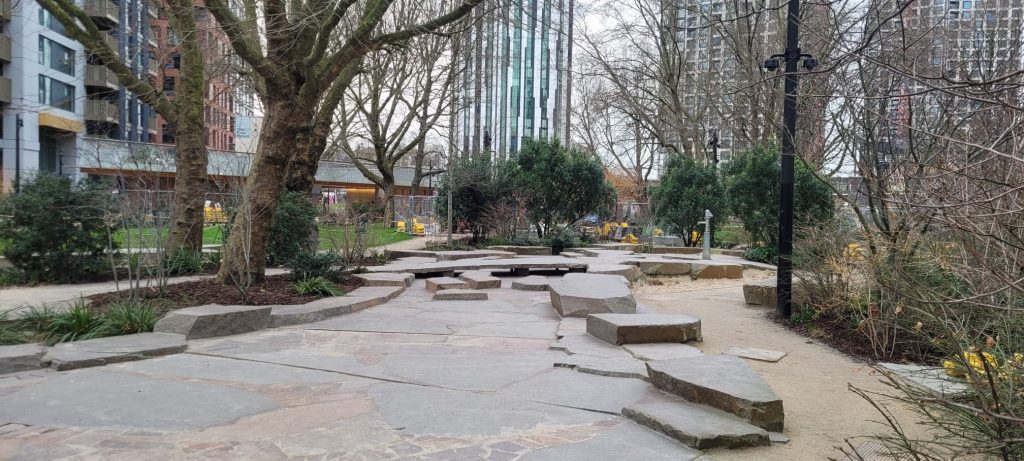
In brighter news, Elephant Park is dedicated to sustainability and low carbon emissions. The Elephant Park website states its aim is to be “among the most sustainable inner-city urban regeneration projects in the world.” Thanks to many of the ex-local residents of the area, namely from Heygate Estate, who campaigned for them, 128 of 410 mature trees- planted in the 1960s- have been kept in the redevelopment, with replacement trees being replanted for those that had to be removed. The new homes built there will also be more energy efficient. The pictured ‘Elephant Springs’ encourages people to enjoy the natural landscapes (though unfortunately the springs were off during shooting) and introduce ‘natural play’ to children.
Citations:
London SE1 website team (2009) Latin Americans must take full part in Elephant & Castle Regeneration says London Assembly Chair, London SE1. Available at: https://www.london-se1.co.uk/news/view/3846.
Perera, J. (2019) ‘you need to look closely, because Elephant and Castle is a model for other dispossession projects’, Institute of Race Relations. Available at: https://irr.org.uk/article/you-need-to-look-closely-because-elephant-and-castle-is-a-model-for-other-dispossession-projects/.
Flynn, J. (2021) Fighting for social housing at the Elephant, Public Interest Law Centre. Available at: https://www.pilc.org.uk/blog/fighting-for-social-housing-at-the-elephant/.

Leave a Reply